Hiraizumi’s Cultural Properties
Architecture
Passing Down Hiraizumi’s Culture
There are many structures in Hiraizumi that convey its history and culture. Those deemed especially important have been designated as National Treasures or Important Cultural Properties. The Konjikidō in Chūson-ji is the only one that has remained intact since the Buddhist temple was constructed 900 years ago by FUJIWARA Kiyohira, and has been designated as the First National Treasure Building. The Konjikidō continues to shine as the light of a splendid culture that blossomed in Hiraizumi.
□ indicates a World Heritage property.
Konjikidō National Treasure
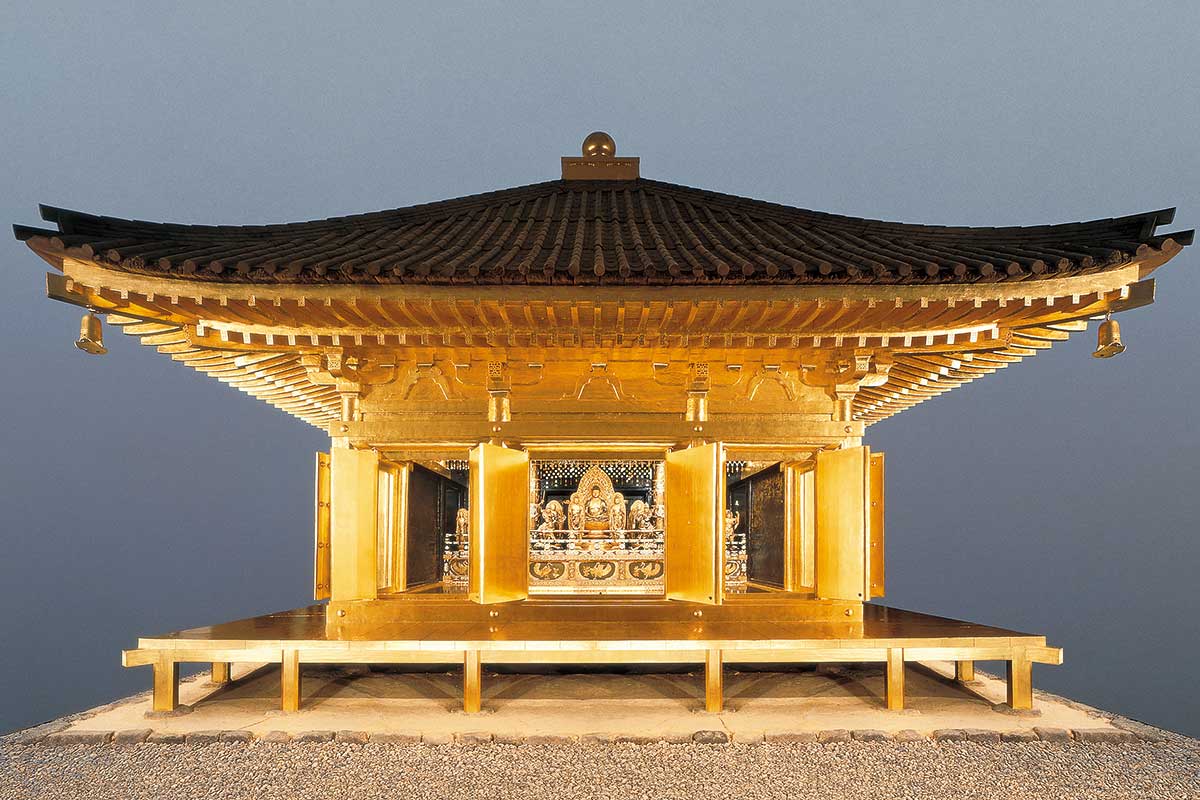
The principal image of the Konjikidō is Amitabha, who is said to be the Buddha of the light. The world of Amitabha is called “The Jodo Paradise.” The Konjikidō shows us the Land of Happiness throughout the entire temple, and the corpses of four generations of the Oshu-Fujiwara clan are housed therein.
Mōtsū-ji’s Jōgyō-dō A part of the historic site
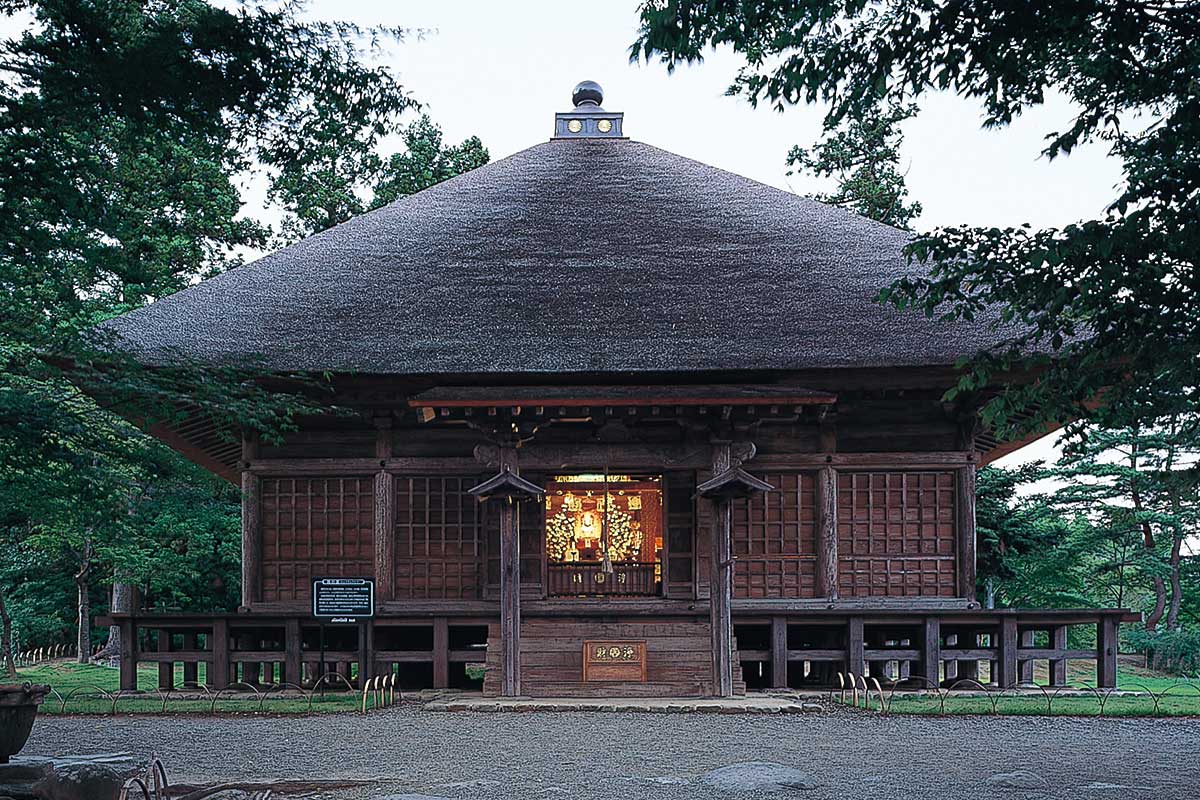
It was rebuilt around the middle of the Edo era, in the 18th century. The most important ceremony held at Mōtsū-ji is “Jōgyō Zanmaiku.”
In addition to the principle image of Amitabha Nyorai, Matarajin (rarely shown to the public), who is considered to be the guardian deity of Mōtsū-ji, is also enshrined here.
The Hatsukayasai Festival held each January 20 to pray to Matarajin. After the monks give prayer and austerities during “Jōgyō Zanmaiku,” “Ennen” (Longevity) is presented.
Sheltering Temple Important Cultural Property
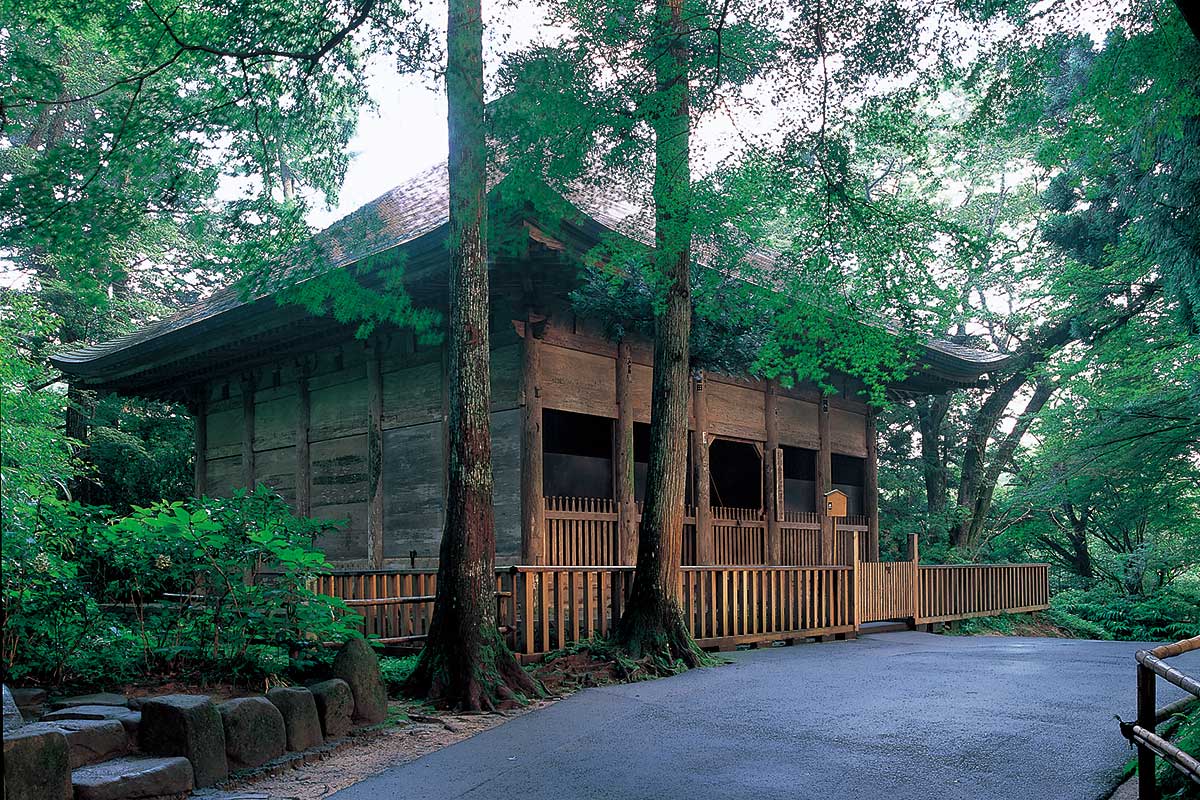
This shelter was constructed to protect the Konjikidō. It was built about 600 years ago and protected the Konjikidō from wind and snow until 1962. It was relocated to its current location along with the construction of the new Sheltering Temple.
Kyōzō (Sutra Repository) Important Cultural Property
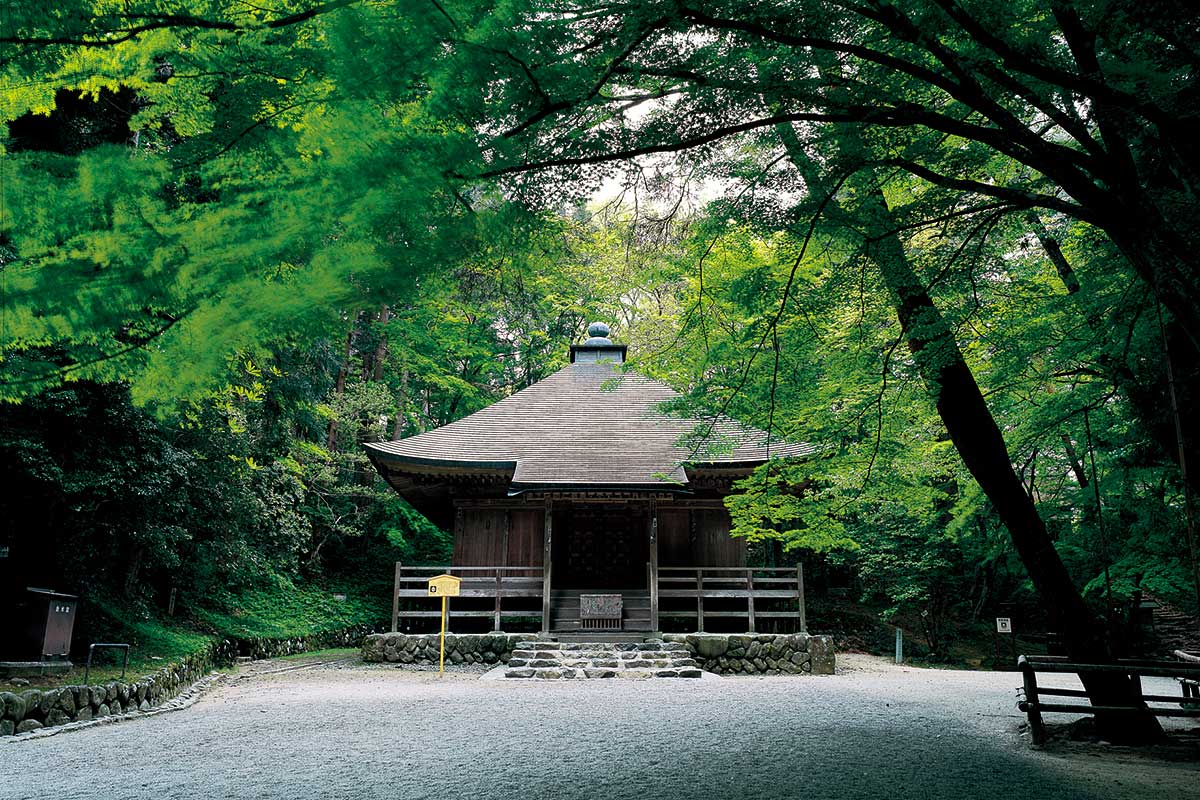
The Kyōzō was built around the same time as the Konjikidō, and was later reconstructed to its current appearance. There are shelves in the hall for storing Chūson-ji sutras, and the colors from the time of construction are preserved.
In addition, as a result of recent dating by growth rings, it was confirmed that some of the original materials were used in this construction.
Hakusan Shrine Noh Stage Important Cultural Property
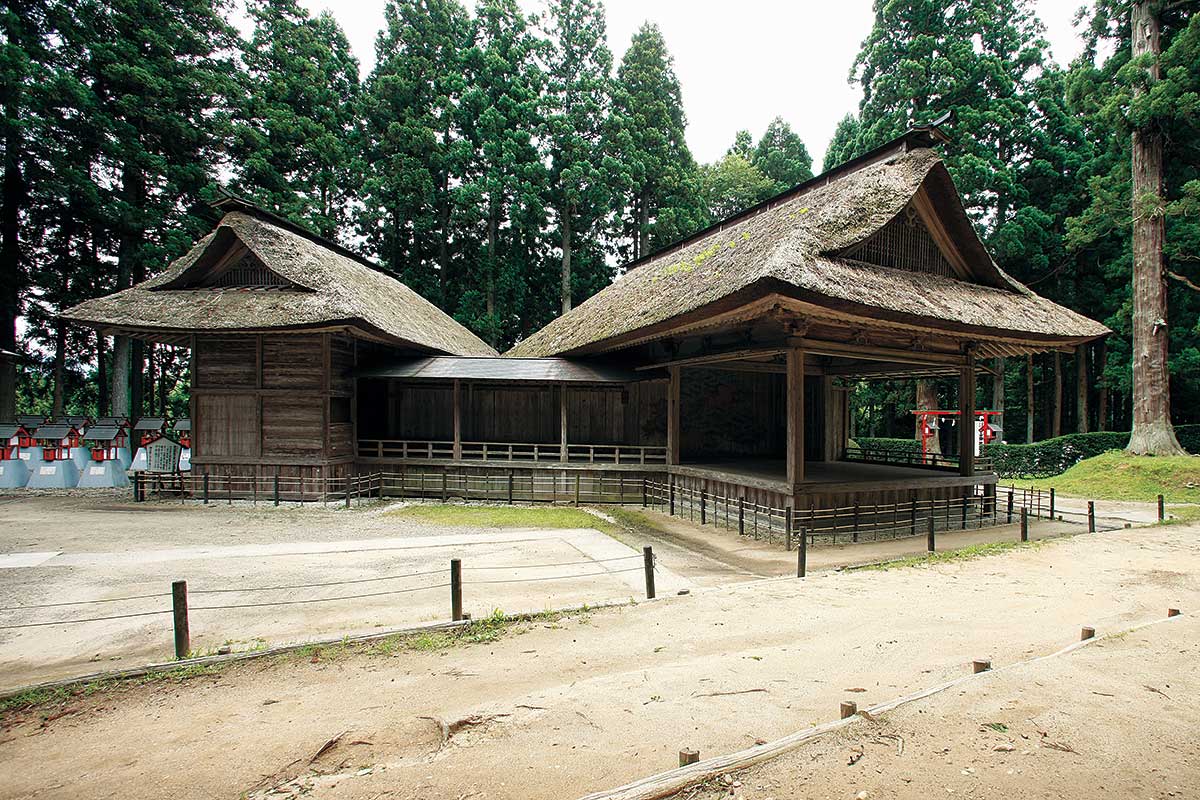
This stage was rebuilt by the Sendai clan at the end of the Edo period. It is one of the few valuable structures in the country that serves as an outdoor Noh stage with ancient features.
May 4 and 5, and November 3 each year, this stage is used during the Hakusan Shrine Festivals, “Kojitsushiki Sanban,” (a type of dance) and “Oshinji Noh,” dedicated by the Chūson-ji Ichiyama monks.
Ganjoju-in Pagoda (left)
Shakusoku-in Gorin Pagoda (right) Important Cultural Properties
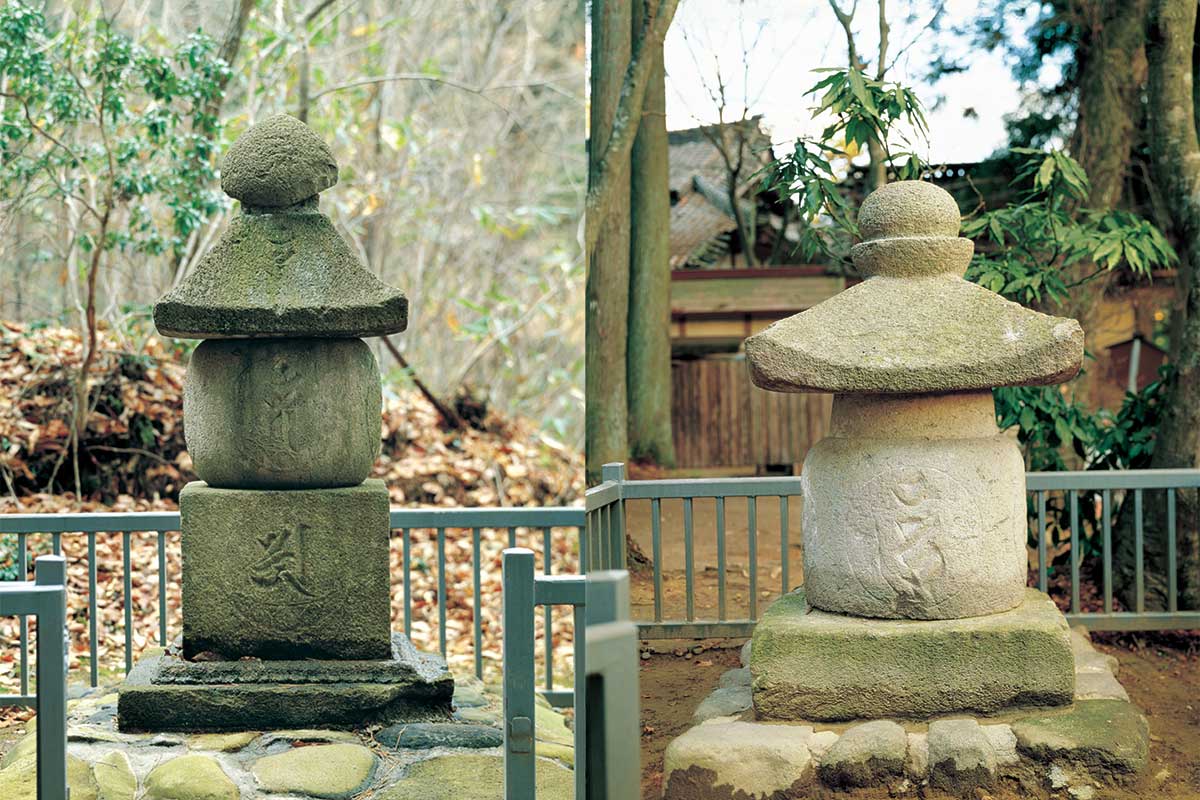
Both are pagodas built in the heyday of the Oshu-Fujiwara clan.
These are rare examples in the modern age, and the Gorin Pagoda is especially old, dating from 1169.
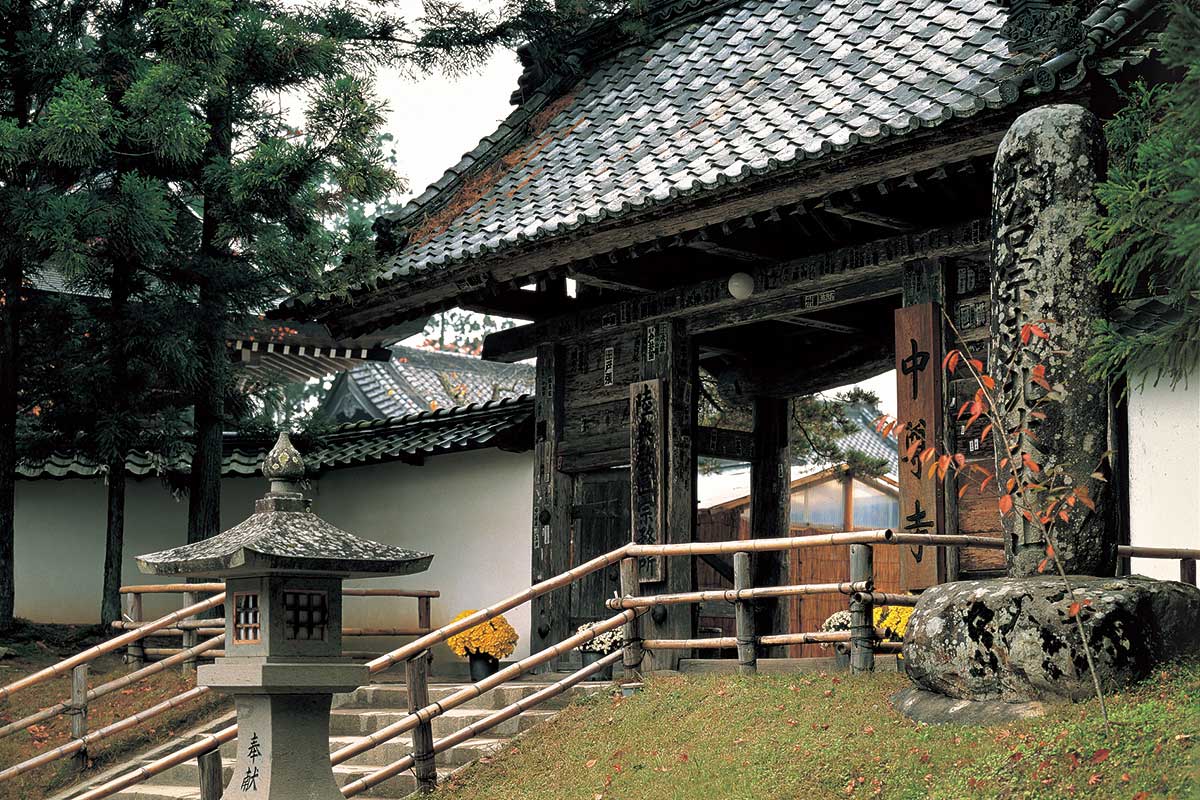
Chūson-ji Honbō Main Gate
Iwate Designated Cultural Property
Ancient Architecture that Remains in the Town
In addition to the Buddhist temples at Chūson-ji, a lot of buildings from the Edo period remain. Thus far, the Chūson-ji Honbō Main Gate and Hōsen-in Quarters have been designated as Cultural Properties by Iwate Prefecture. This ancient architecture has the characteristics of the various lands, such as structure and construction methods. It is important to learn the culture related to lifestyle, such as various technologies and the state of life at the time they were built.